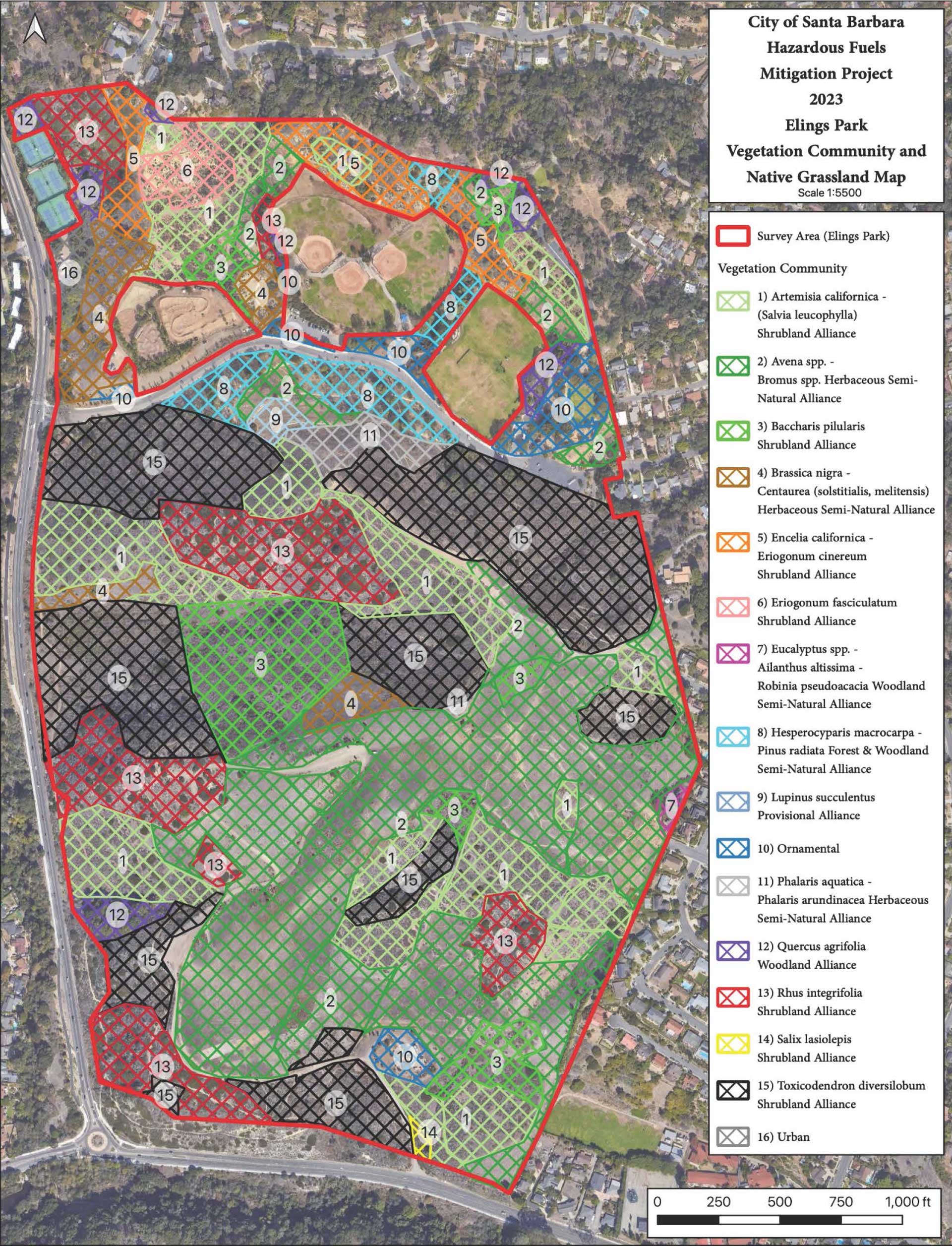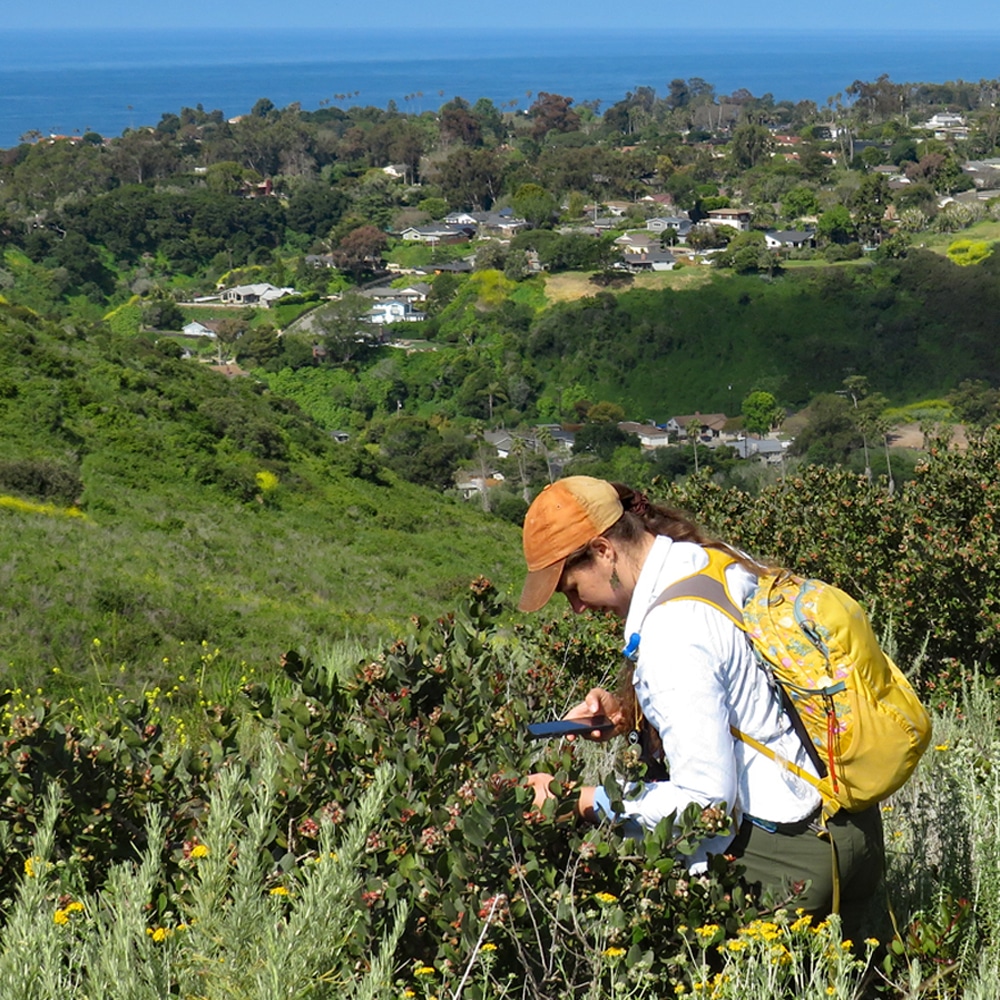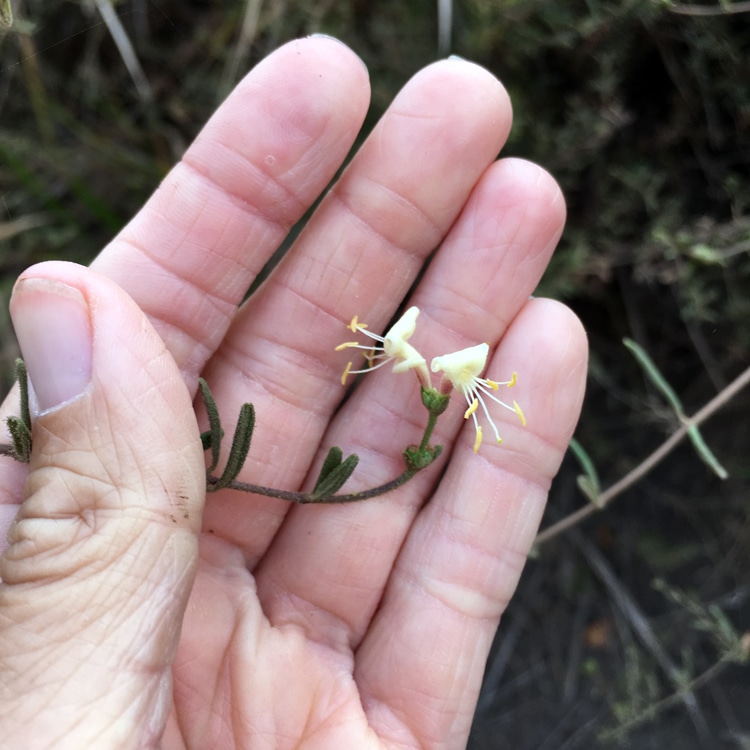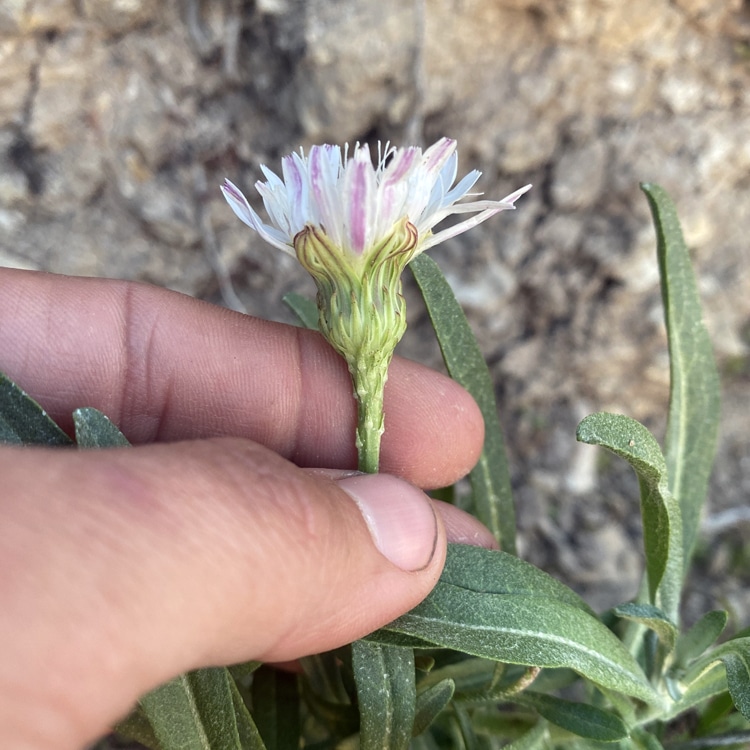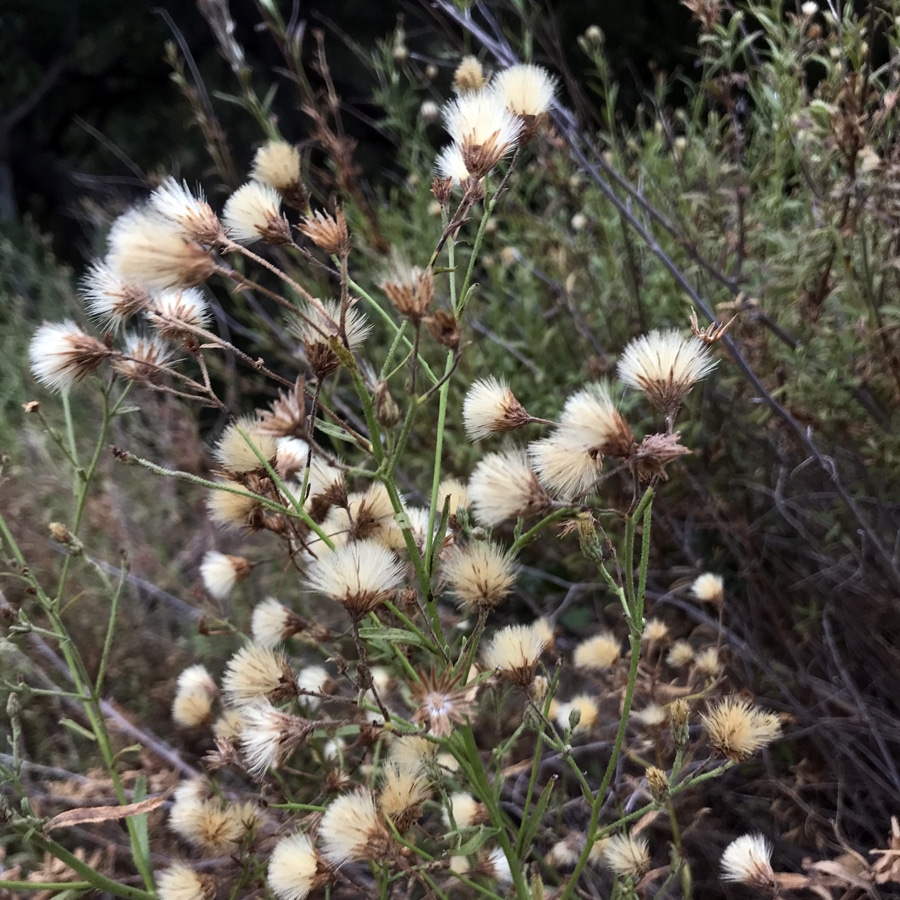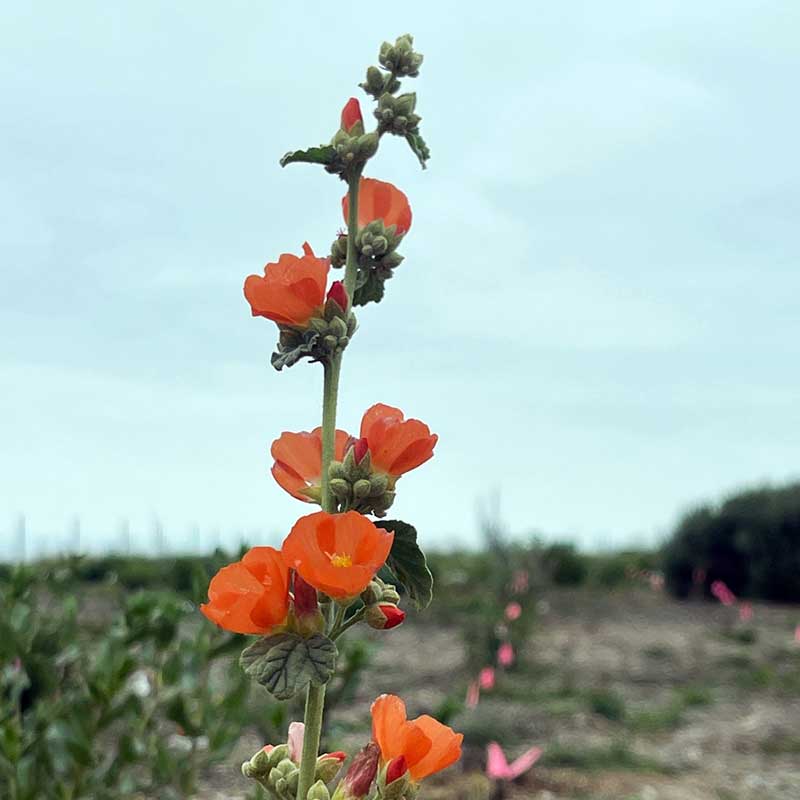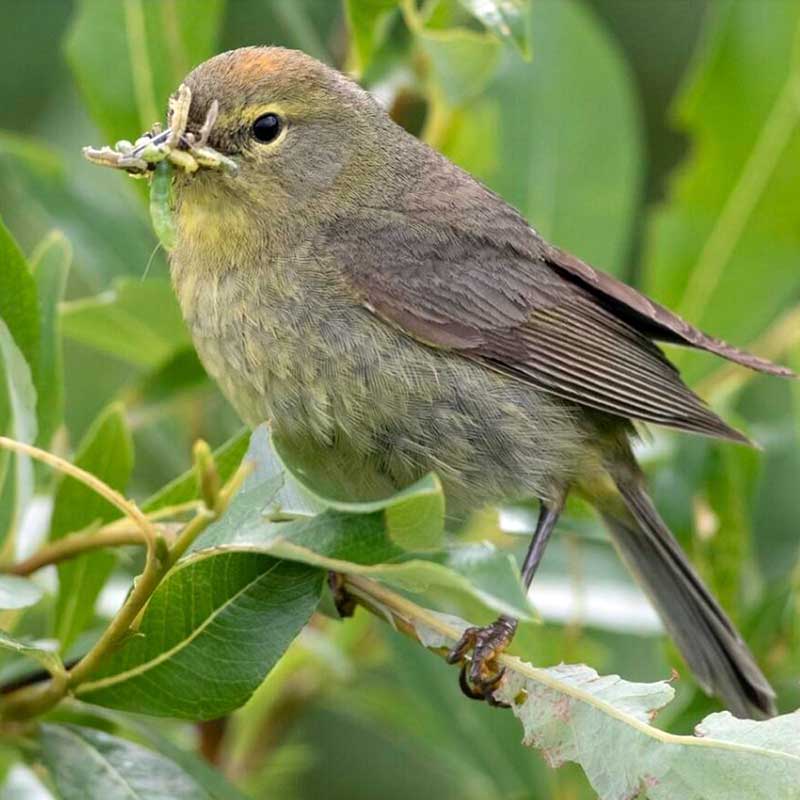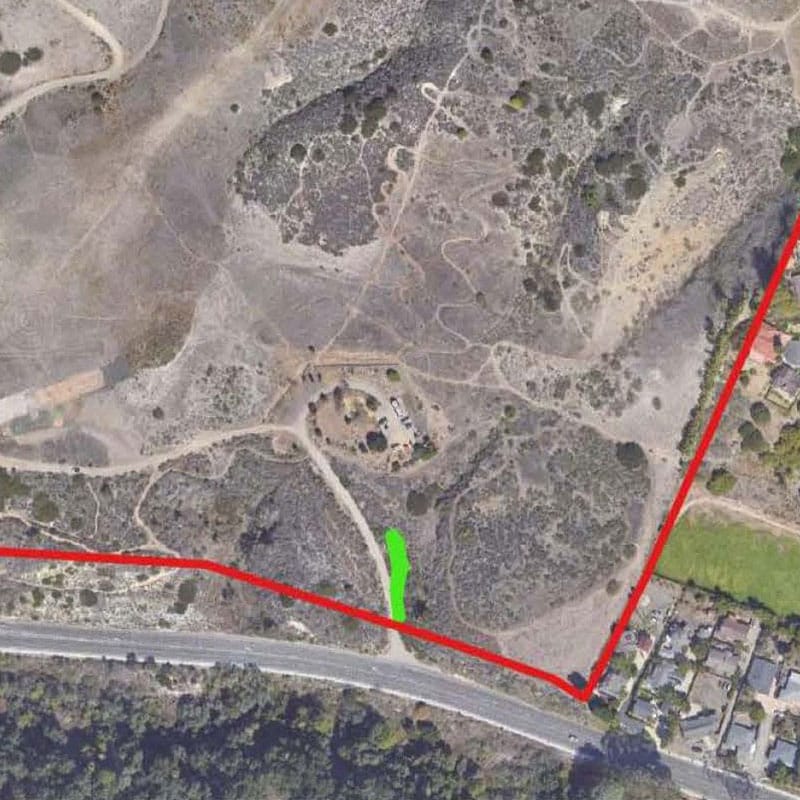Discover Elings Park’s Plant Communities
Notable plant communities include:
Shrubland Alliance
Poison oak scrub (Toxicodendron diversilobum)
This shrubland alliance covers approximately 43.2 acres with poison oak as the dominant species, with greater than 50% cover. This alliance is typically found on the coast in low wooded areas or interior disturbed dry slopes.
California sagebrush – purple sage scrub (Artemisia californica – Salvia leucophylla)
This scrub shrubland covers approximately 30.73 acres and is dominated by the two species of its name. Two special status species were observed: Santa Barbara honeysuckle (Lonicera subspicata var. Subspicata) and Cliff Aster (Malacothrix saxatilis var. saxatilis.)
Coyote brush scrub (Baccharis pilularis)
Coyote brush scrub at Elings Park covers approximately 12 acres. Typical topography includes coastal bluffs, terraces, stabilized dunes of coastal bars, open exposed slopes, ridges, and gaps in forest stands. Coyote brush is dominant or co-dominant with California coffeeberry, Poison oak, and Rubus species.
California brittlebush – Ashy buckwheat scrub (Encelia californica – Eriogonum cinereum)
This scrub covers approximately 6.16 acres, and is found on sunny, steep slopes that are often rocky or eroded. This shrubland alliance is a sensitive community.
Arroyo willow thickets (Salix lasiolepis)
Arroyo willow thickets cover approximately 0.18 acres, with arroyo willow dominant or codominant in a shrub or low-tree canopy.
Lemonade berry shrubland (Rhus integrifolia)
This vulnerable plant alliance is found on slopes and coastal slopes from Southern California to northern Baja California and on the Channel Islands. It covers approximately 19.5 acres of Elings Park. Plummer’s baccharis (Baccharis plummerae ssp. Plummerae) was found here, a “vulnerable” special status plant species.
Herbaceous Semi-Natural Alliance
Wild oats and annual brome grasslands (Avena spp. – Bromus sp.)
This alliance covers approximately 48.72 acres, with an open canopy and may include scattered shrubs and trees at low cover. Typical topography includes foothills, rangelands, and openings in woodlands. Species come from the oat, mustard, brome grasses, and stork’s-bill families. Common species at Elings Park are false broom, rattail sixweeks grass, Italian rye grass, fennel, wall barley, Bur clover, and radish.
Upland mustards or star-thistle fields (Brassica nigra – Centaurea solstitialis, melitensis)
Upland mustards or star-thistle fields cover approximately 6.2 acres at Elings Park, with common species including black mustard, Maltese star thistle, Mediterranean hoary mustard, and Geraldton carnation weed.
Woodland Semi-Natural Alliance
Eucalyptus, tree of heaven, and black locust groves (Eucalyptus sp. – Ailanthus altissima – Robinia pseudoacacia)
This alliance is typically planted as trees and shrubs. In Elings Park, it covers about one-third of an acre and is comprised of eucalyptus, tree of heaven, and black locus groves.
Other Land Covers
Ornamental plantings were observed around a paved parking lot and in the public event sites Godric Grove and Singleton Pavilion.

